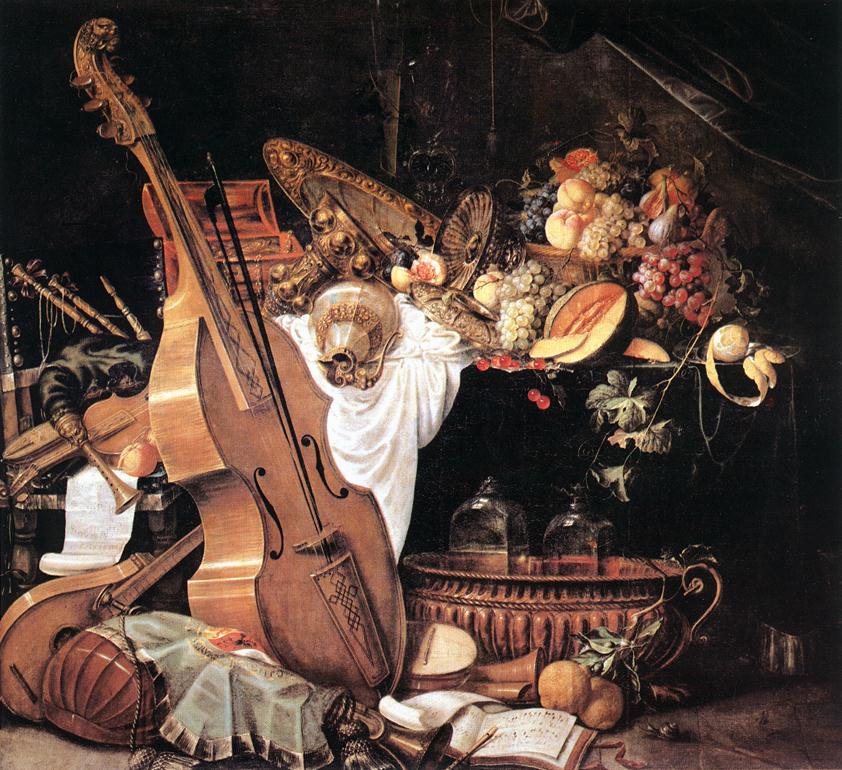Vanitas Still-Life with Musical Instruments Cornelis de Heem (1631-1695) after 1661

Description from Web Gallery of Art
Oil on canvas, 153 x 166,5 cm
Rijksmuseum, Amsterdam
The artist belonged to the second generation of the famous dinasty of still-life painters. He spent his youth in Leiden and as demonstrated by this work, he established close connection with the Leiden school of painting.
This splendid painting invokes the memory of the golden age of Dutch still-life painting. The sumptuousness of the instruments is especially fascinating. Most prominent among them is the six-stringed, inlaid viola da gamba leaning against the chair, with a lion's head for decoration and an "S" shaped sound hole (more characteristic of violin). Next to it on the ground are two types of lutes, a trumpet, a flute and a mandolin; in a chair on the left, a violin, a bagpipe and a small pocket violin.
On the table, richly laid with fruits and golden objects, are the traditional symbols of Vanitas. To illustrate the transitoriness of pleasures gained from wealth, plentitude and eating and drinking, there is an up-ended wine jug from which its content have spilled onto the ground, symbolizing that earthly pleasure is short-lived and man will return to dust. In this context the instruments are symbols of physical love. Next to them the painter depicted a snail on the ground. It was generally believed that this animal was born of mud, thus it became the symbol of sin. In contrast, the ivy crawling up the wall in the background promises immortality. The peach, melon and fig, since they are cut open and their seeds are revealed, symbolize reviviscence and resurrection. This image make the message of the painting less somber, although its warning intent is unmistakably recognizable.